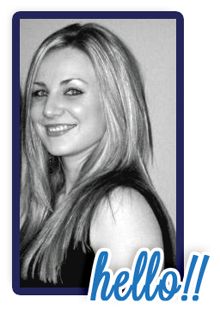A time when you witnessed an adult (or yourself) reprimand or silence a
child after he or she pointed out someone they saw as different (e.g.,
"That lady talks funny," " That man only has one leg!"
"Why is that man so pretty!"). Include what the child said and what
the adult did or said in response. (Note: If you cannot think of a specific
time ask a friend or family member.)
 A few
years ago my friend and I took her daughter (six years old) to the Mall of
America in Minneapolis during a long weekend. Coming from a smaller city center
she was rarely exposed to different ethnicities and cultural diversity. A group
of Indian woman wearing bindis walked by and she asked us “What’s wrong with
their heads”? Her mom hushed her to be quiet and no conversation took place
afterwards.
A few
years ago my friend and I took her daughter (six years old) to the Mall of
America in Minneapolis during a long weekend. Coming from a smaller city center
she was rarely exposed to different ethnicities and cultural diversity. A group
of Indian woman wearing bindis walked by and she asked us “What’s wrong with
their heads”? Her mom hushed her to be quiet and no conversation took place
afterwards.
What messages might have been communicated to this child by the adult's
response
I
believe that several messages could have been communicated and misconstrued as
a result of my friend’s response. First, she was shamed about asking a question
about people who are different from her. “Young children need caring adults to
help them construct a positive sense of self and a respectful understanding of
others. They need adults to help them begin to navigate and resist the harmful
impact of prejudice and discrimination (Derman-Sparks & Olsen Edwards,
2010, p.11). Secondly, not answering her question made it seem like associating
with people different from her is bad or inappropriate. “Learning about culture
and fairness involves two dimensions: children’s development pf a positive
cultural identity, and their comfortable, respectful interaction with the cultures
of others” (Derman-Sparks & Olsen Edwards, 2010, p. 55).
An example of how an anti-bias educator might have responded to support
the child's (or classroom’s) understanding.
I think
that the situation could have been better handled if my friend just explained
the culture of the group she asked about. She could have also explained to
daughter that curiosity and questions are normal and encouraged but that she
should ask more discretely.
“What children, ask, say, or do
about any aspect of their own or others’ identities and differences are the
wonderful “teachable moments” of anti-bias education. How you respond to these
opportunities is a central part of effective teaching with young children. When
children make comments that reflect discomfort, stereotypes, or rejection of an
aspect of diversity, they may stir up your own hurt or anger about prejudice
and discrimination” (Derman-Sparks & Olsen Edwards, 2010, p.32)
References:
Derman-Sparks, L., & Olsen Edwards, J. (2010). Anti-bias
education for young children and ourselves. Washington, DC: NAEYC.





3 comments:
Rhiannon,
I understand when you speak about when kids come from smaller city they not exposed to different kind of diversity. There was a show on many years ago with Bill Cosby andthe title of the show was Kids say the Darnest things, it was so hilarious. You spoke about the time when a child was pointing out when they saw someone who was different, I had to stop my grandkids for doing that. I loss my uncle about three years ago and he was a Veteran, and so many people came over to my house and paid their respect. There was one man who had one leg and we were in my backyard having a good time eating, dancing. The man with the one leg started dancing, did you know my granddaughter was about four years old started dancing with one leg up, she was mocking that man but not knowing he had one leg. My daughter had to call her inside and explain why the man was dancing like that, she didn't undertstand. Children are so curious, we as parents , educators and friends must sit these young or older kids down and talk to them.
Great Post!
Royce
Hi Rhiannon,
Thanks for sharing. Like you said, the situation could have been handled better but I think a lot of parents and adults first reaction is to shut the conversation down. I know that I have been in this situation many times before taking this course. I was so concerned with hurting feelings or embarrassing/offending someone that I would respond with a "shhh!" As Royce said, children are curious and they learn from us. If we tell them not to talk about something or shame them for asking questions, we are sending the wrong messages. I am glad that I am more aware of this now and I feel better prepared to handle any questions that may arise in the future.
Rhiannon,
I know that feeling when you ask a question and someone shhh you; maybe because they are afraid (my situation) or don't know the answer of the question or even worse are embarrassed. I remember one time I was walking with my aunt, we went to the mall and when we finished we went to get the bus. I saw a group of women (prostitutes) standing against a wall and wearing "funny" make up and dresses. I looked at them and asked my aunt why they were dressed like that. My aunt pulled me closed to her and told me to be quiet and walk faster. I was afraid, I thought she was mad at me, so later on she explained to me what they were doing there and that they do not like to be look at or talk about them because they could cut you or do worse things. That was so long ago, but I still remember that moment, it was scary.
Post a Comment